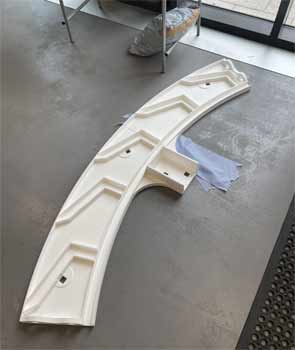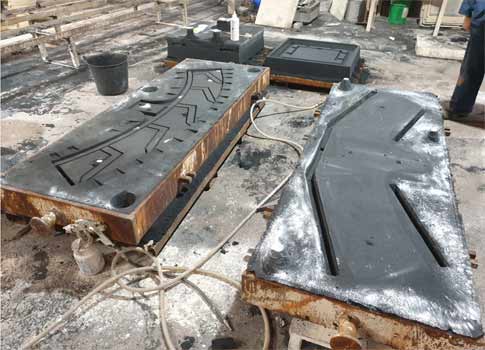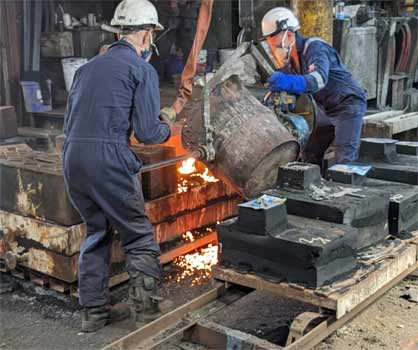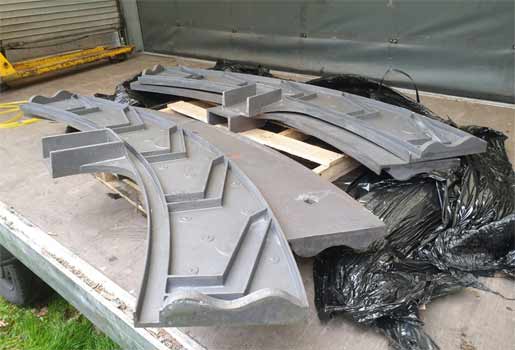New Shrouds
The reconstruction of one side of the wheel showed that we had one set of good shrouds that can be used for the new wheel. Examination of the remaining shrouds showed that we only had five of the six required and that those five didn't all match, some being thicker than others. A decision was made to cast a whole new set of shrouds using one of the good shrouds as a model.
Making a pattern for casting is usually done in wood and is an expensive process requiring a skilled pattern maker. The pattern has to be slightly larger than the eventual cast metal object to allow for shrinkage as the hot iron cools. We were extremely lucky that a visitor to the mill from Lancaster University offered to 3D print a pattern for us. The University were involved in an EU funded project to use 3D printing in association with Heritage projects such as ours. The pattern would be provided to us free of charge.
One of our good shrouds was taken down to Lancaster where it was scanned by lasers to get an exact 3D image of it. This image was then flipped so that it would form the other side of the wheel and increased in size to allow for the metal shrinkage. Then the pattern was printed in a 3D printer. It was so large that it had to be printed in two parts and than glued together.
The pattern was then taken to Trent Castings, a traditional iron foundry in Mansfield, to be cast. Our Chief Engineers went down to observe the casting of the first shroud. First of all a two part mould is made in sand using the pattern. Then the molten iron is poured into the mould and allowed to cool overnight. The pattern can be used several times to make in our case the six shrouds that we need.
The new shrouds were delivered in October 2023.




